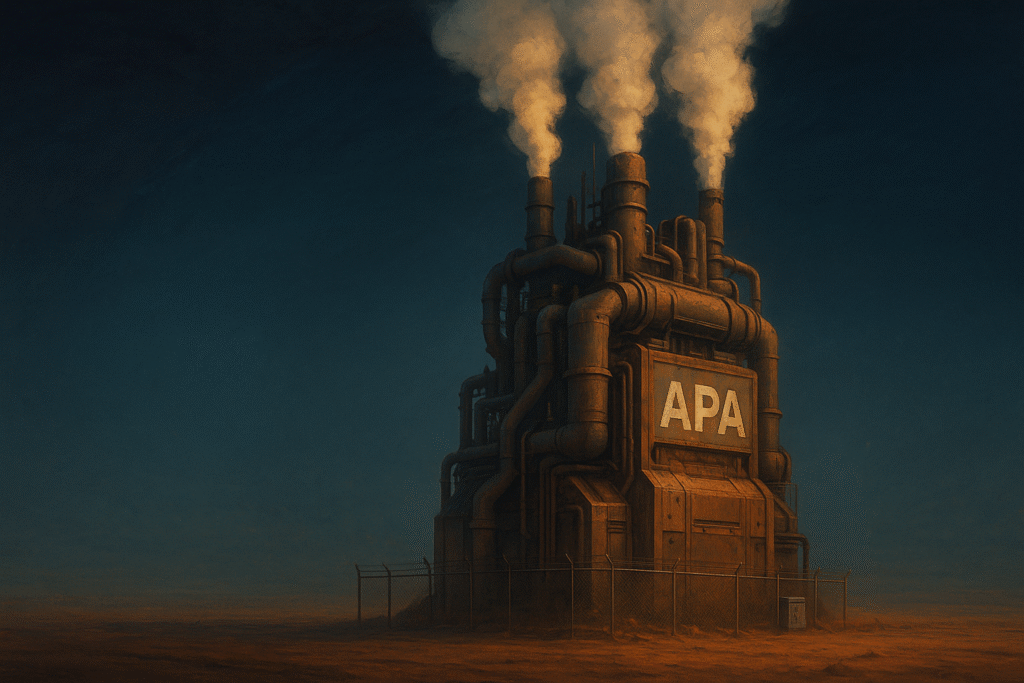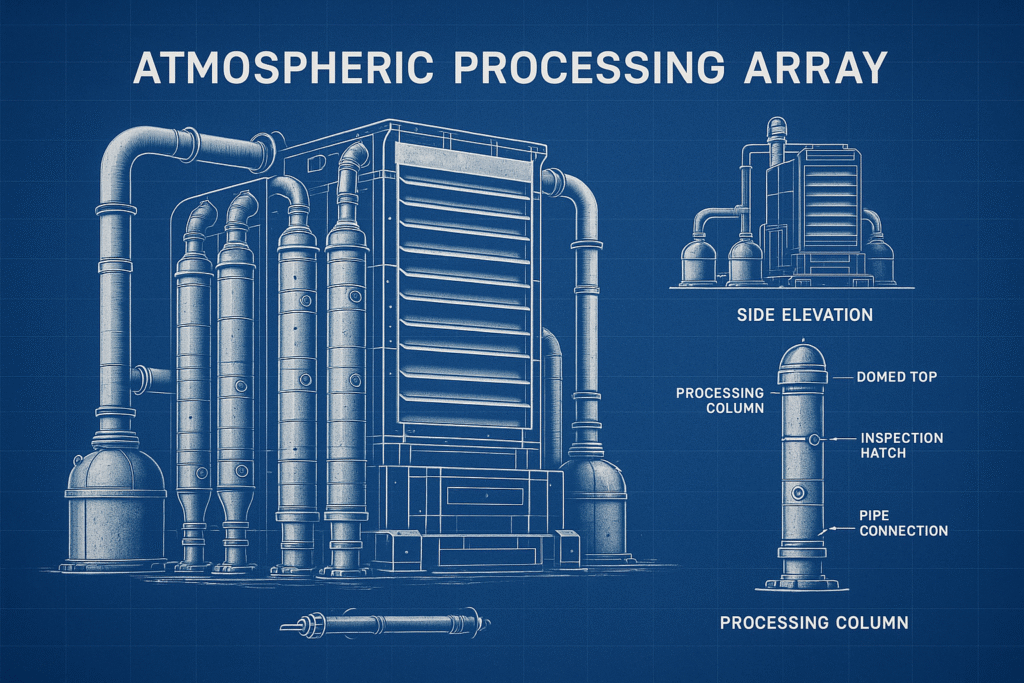

Atmospheric Processing Array (APA)
Model Series: APA-M7
Division: Environmental Systems – Mars Subterranean Habitats
Issued by: Martian Terraforming and Life Support Authority (MTLSA)
Revision Date: 2291.08.24
📘 OVERVIEW
Atmospheric Processing Arrays (APAs) are large-scale, modular systems engineered to generate, regulate, and maintain breathable atmospheres within subterranean Martian environments. Designed for autonomous operation, each unit integrates advanced chemical synthesis, AI-governed climate control, and high-efficiency fusion power systems.
🔧 CORE FUNCTIONS
Function | Description |
Gas Conversion | Electrochemical breakdown of locally sourced CO₂ via solid oxide electrolysis into O₂ and CO. |
Oxygen Generation | High-purity O₂ output, maintained at ~21% mix ratio for human respiration. |
Nitrogen Balance | Captured from Martian trace gases or synthesized from ammonia stockpiles, adjusted to achieve 78% N₂ mix. |
Trace Elements | Noble gases (e.g., Argon, Neon) blended for pressure stability and Earth-like atmosphere mimicry. |
Climate Control | AI-assisted management of humidity, pressure, and temperature across habitat zones. |
Filtration | Multi-stage particulate and microbial filtration, with chemical neutralization scrubbers. |
⚙️ TECHNICAL COMPONENTS
Subsystem | Details |
Gas Synthesis Core | Solid oxide electrolysis modules, rated for continuous CO₂ breakdown and O₂ yield. |
Power Supply | Deuterium–Helium-3 fusion core, providing high-efficiency, long-duration power. |
Smart Filters | Replaceable cartridge arrays with self-diagnostic and decontamination protocols. |
Climate AI | Adaptive algorithm suite with zone-wide balancing, predictive modeling, and emergency override routines. |
Atmospheric Grid Sync | Linked node mesh for redundancy, zone isolation, and emergency rebalancing. |
🛡️ SAFETY & REDUNDANCY
- Grid Overlap Design ensures no single point of failure in populated caverns.
- Zone Isolation Protocols activate automatically upon breach or contamination detection.
- Emergency Gas Resequencing capable of correcting oxygen/nitrogen balance in under 3.4 seconds post-incident.
- Designed to withstand seismic shifts and power fluctuations with autonomous stabilization routines.
🧬 IMPACT
Atmospheric Processing Arrays transformed Mars’ cavern systems into Earth-mimicking ecosystems, enabling long-term habitation, agriculture, and industrial operations far below the planet’s surface. They are the lungs of the Martian underground.
Authorized Use Only
MTLSA Engineering Reference Catalog | Doc ID: APA-M7-DS/2251